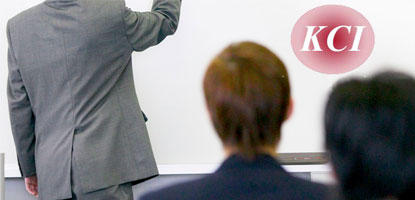Reporting Phase
1. Creating "Responsibility Matrices" is also very simple on the process maps. Within a QPR process map, the responsible designation ("doer") is defined by the organizational unit band which moves horizontally across the processes. For each sub-process and main process (and activity if relevant), QPR allows us to select the designation of the process owner or accountable person for the process. This is graphically defined by the designation of the process owner on the process box itself. The RACI can also be graphically generated in the classical grid format as shown under using custom attributes available in QPR:
2. It is also possible to add Job Descriptions and Competencies for each position on the Organization Hierarchy. Within QPR, custom attribute fields are created within the process model. The required custom attribute field can then be assigned to the organizational units and filled up as required. Having the job description linked to be organizational unit allows easy verification of whether the tasks being performed by the position described is adequately reflected in the job description in terms of dimensions accountabilities and skill sets. In the screenshot below, we can see that on the left side we have the organizational chart with the reporting hierarchy, and for the selected job position on the right side we have the different fields of the job description.
3. Generating risk / control hierarchies. Once the process repositories are built, it is easy to generate custom reports using QPR such as the risk / control hierarchies shown below, as well as links to risk measurements and control tests. E.g. Risk / Control Hierarchies and monitoring
Benefits of using QPR as a tool in Process Consulting
Multiple benefits accrue from using QPR as a tool in Process Consulting.
* Creation of a Process Repository with best practice processes by industry
* Creation of base process templates for new assignments
* Transparency and accountability during the process implementation due to logging and online publishing
* Delivery of process documents on Microsoft Word (auto created from QPR ProcessGuide)
* Optional delivery of the QPR ProcessGuide Model itself, to enable the customer to carry forward the process initiative
* Create comprehensive business process models showing high level and details illustrating the most current status of your operations
* Standardize work practices by designing uniform guidelines e.g. for quality systems
* Re-engineer and improve the business processes to ensure optimized flow of materials, resources and information
* Quickly review resource (human or system) utilization per organization and find the detailed information about a resource or activity
* Simulate processes to identify potential bottlenecks, optimize resource utilization and validate improvements
* Analyze processes, illustrate and benchmark results with the highly visual and easy-to-understand graphs and reports of QPR ProcessGuide
Conclusion
The traditional methods of consulting are being quickly replaced by tool based consulting which will enable consulting firms to deliver better results in a shorter time, which translates to more project profitability for the consulting firms, and better resource utilization for in-house process consulting teams. QPR products are leading the way in providing these benefits. For additional information on QPR Tools, please browse to www.eai.com To send a comment or contact the author, please email This email address is being protected from spambots. You need JavaScript enabled to view it.

